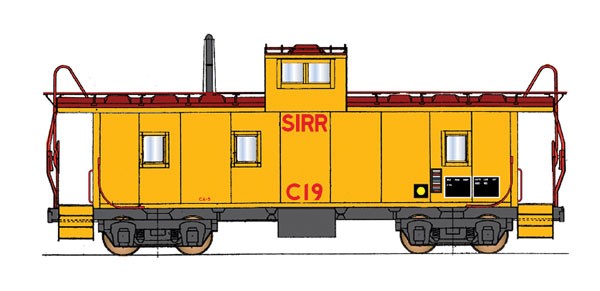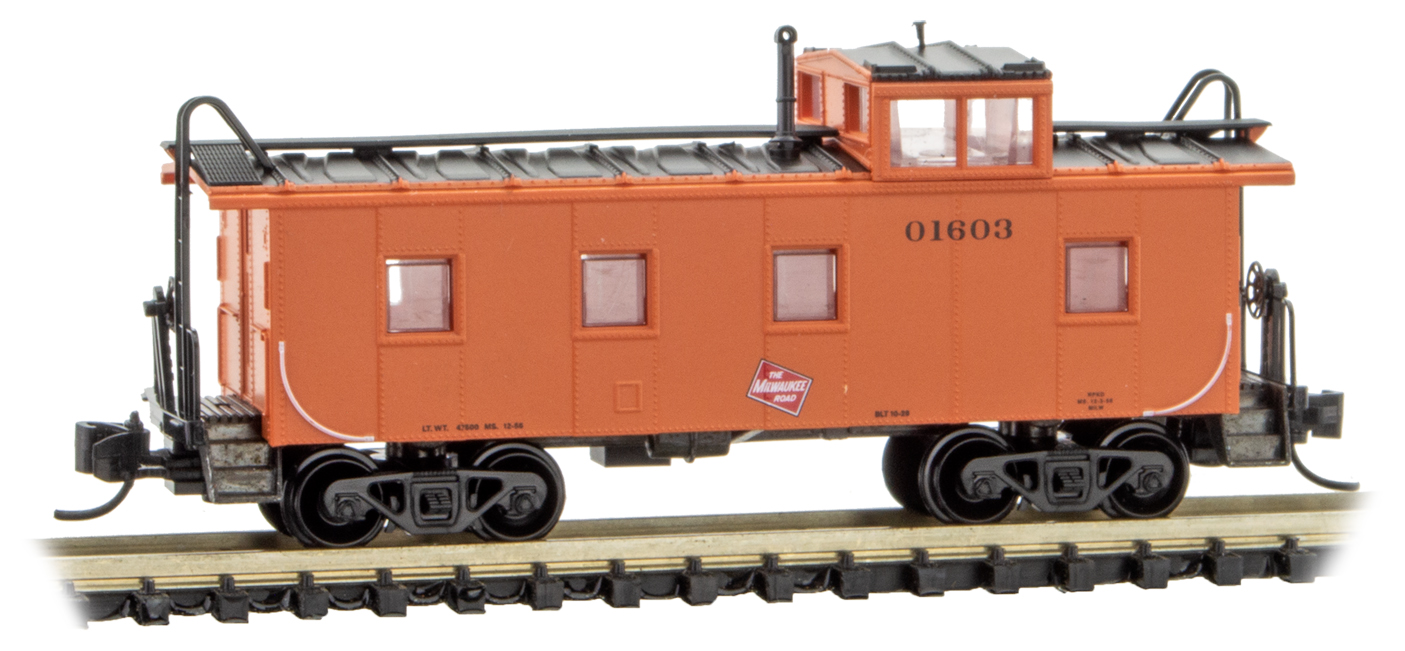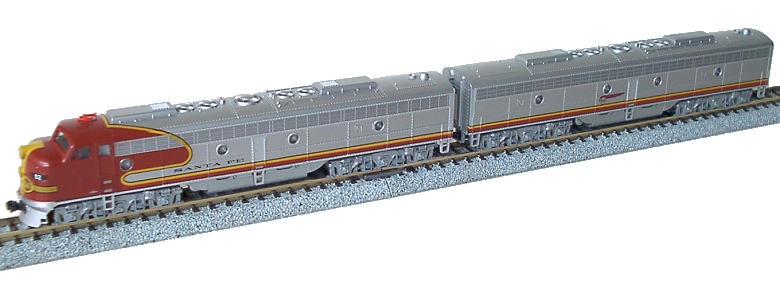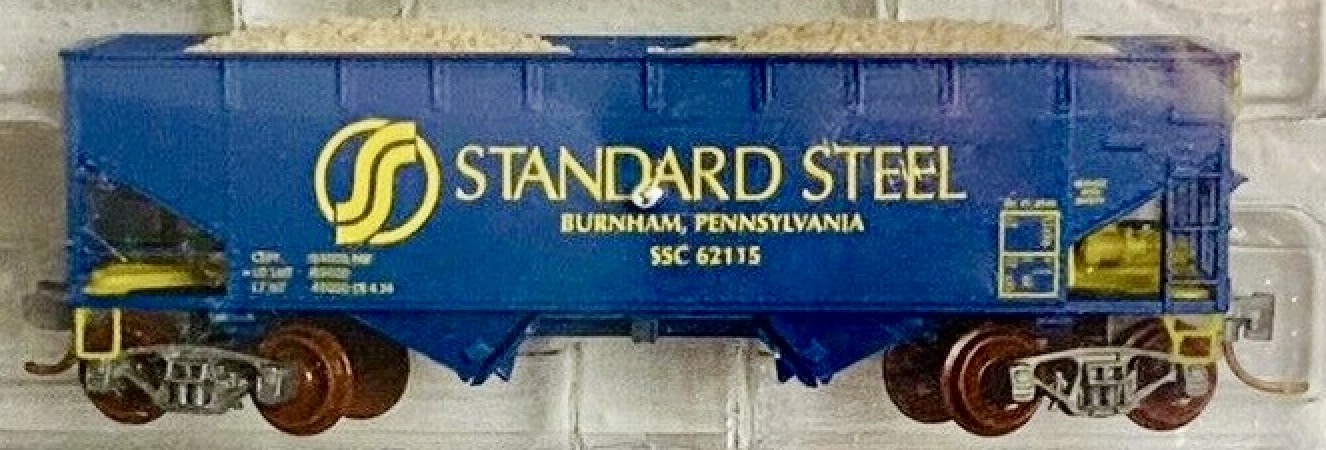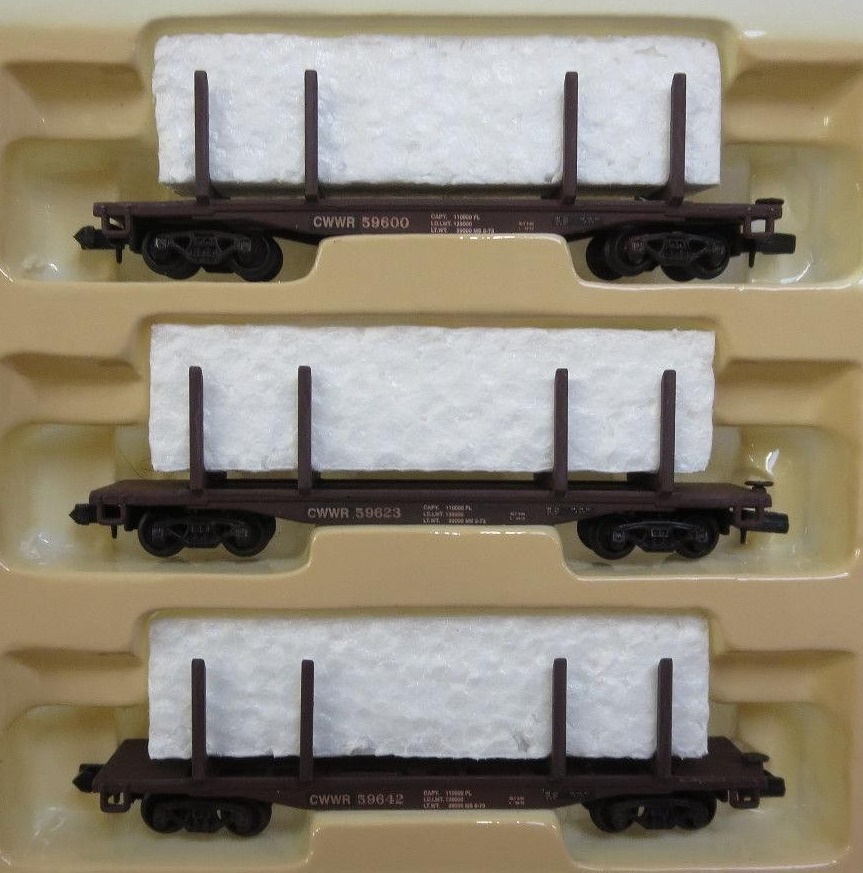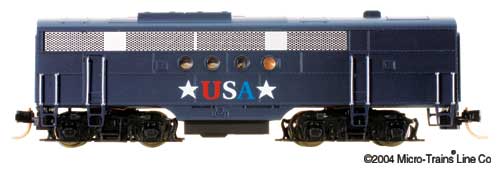Prototype History: The origins of the railroad caboose appear to date back to the 1840s when Nat Williams, a conductor of the Auburn & Syracuse Railroad (a later affiliate of the New York Central) became fed up with cramped and uncomfortable quarters to do paperwork (a common job of the conductor, whose responsibility is general oversight and control of a train, passenger or freight), which was usually done in either a free space of a passenger car or combine/baggage car. To fix this problem, Williams found an unused boxcar and using a simple box and barrel, as a seat and desk, set up shop in the car to do his duties. Not only did he find out he had plenty of room to work but also figured that he could use the unused space to store tools (flags, lanterns, spare parts, etc.) and other essentials to have on board whenever needed (such things become commonly stored on the caboose).
Perhaps the most striking feature ever applied to the railroad caboose was its cupola. According to the story, conductor T.B. Watson of the Chicago & North Western in the 1860s reportedly used a hole in a boxcar’s roof (which he was using as a caboose) to get a better vantage point of the train ahead. It is said that Watson was amazed by the view afforded from the position being able to not only see the train ahead but also from all sides, and to the rear as well. He apparently convinced C&NW shop forces to construct a type of open observation box onto an existing singe-level caboose with windows all around where one could sit and view their surroundings. The rest, as they say, is history and the common cupola was born.
Steel Cabooses replaced their wood-sheathed brethren after the second world war when the steel glut made the production and maintenance of steel cabooses far more efficient than wooden models. With the advancement of the End-of-Train device, cabooses slowly began to fall out of favor. However, in the early 2000’s, “shoving platforms” began to appear as a place to safely house a crew when a reverse move was required. Instead of riding on the side of a freight car, the crew member now has a safe place to stand, while guiding the rear of a reverse move.
Perhaps the most striking feature ever applied to the railroad caboose was its cupola. According to the story, conductor T.B. Watson of the Chicago & North Western in the 1860s reportedly used a hole in a boxcar’s roof (which he was using as a caboose) to get a better vantage point of the train ahead. It is said that Watson was amazed by the view afforded from the position being able to not only see the train ahead but also from all sides, and to the rear as well. He apparently convinced C&NW shop forces to construct a type of open observation box onto an existing singe-level caboose with windows all around where one could sit and view their surroundings. The rest, as they say, is history and the common cupola was born.
Steel Cabooses replaced their wood-sheathed brethren after the second world war when the steel glut made the production and maintenance of steel cabooses far more efficient than wooden models. With the advancement of the End-of-Train device, cabooses slowly began to fall out of favor. However, in the early 2000’s, “shoving platforms” began to appear as a place to safely house a crew when a reverse move was required. Instead of riding on the side of a freight car, the crew member now has a safe place to stand, while guiding the rear of a reverse move.
Road Name History: 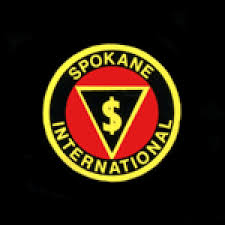 The Spokane International Railroad (reporting mark SI) was a short line railroad between Spokane, Washington, and the Canadian Pacific Railway (CP) at Kingsgate, British Columbia. The line became an important one for the CP with its connections to the Union Pacific Railroad and Portland, Oregon.
The Spokane International Railroad (reporting mark SI) was a short line railroad between Spokane, Washington, and the Canadian Pacific Railway (CP) at Kingsgate, British Columbia. The line became an important one for the CP with its connections to the Union Pacific Railroad and Portland, Oregon.
The line, originally named the Spokane International Railway, was built by local businessman and railroader Daniel Chase Corbin following an agreement between him and the CP, with CP agreeing to fund much of the line's construction and to secure the loan by holding the new line's bonds.
Especially significant was that the CP controlled the Minneapolis, St. Paul and Sault Ste. Marie Railway (Soo Line) and its connections to Minneapolis, Minnesota, Saint Paul, Minnesota, and Chicago, Illinois. Completion of the Spokane International now meant that the CP could compete with the Northern Pacific Railway and Great Northern Railway lines for transportation between the Midwest and the Puget Sound area (in conjunction with the Union Pacific Railroad subsidiary Oregon-Washington Railroad and Navigation Company west of Spokane). Express passenger service was soon introduced on the line via the Soo-Spokane Train De Luxe.
The SI was reorganized October 1, 1941, following financial difficulties and receivership during the Great Depression. The line was renamed the Spokane International Railroad as part of the restructuring agreement until the 1950s.
On October 6, 1958, the Union Pacific Railroad (UP) took control of Spokane International Railroad. In 1962 UP leased SI's 11 ALCO RS-1 locomotives for operation. The locomotives were later repainted to UP's yellow and gray paint scheme, but retained their SI lettering. Also in 1962, UP sold four of its older steel cabooses to SI. These were also painted in UP's yellow scheme, but received SI lettering and numbers. After UP's 1958 control of SI, Union Pacific continued to lease SI for operation. On December 31, 1987, Union Pacific formally merged SI into its corporate structure.
At the end of 1960 SI operated 150 miles of road on 190 miles of track; that year it reported 141 million net ton-miles of revenue freight and zero passengers.
The line remains in operation as an important UP connection between southern British Columbia and the northwest United States.

The line, originally named the Spokane International Railway, was built by local businessman and railroader Daniel Chase Corbin following an agreement between him and the CP, with CP agreeing to fund much of the line's construction and to secure the loan by holding the new line's bonds.
Especially significant was that the CP controlled the Minneapolis, St. Paul and Sault Ste. Marie Railway (Soo Line) and its connections to Minneapolis, Minnesota, Saint Paul, Minnesota, and Chicago, Illinois. Completion of the Spokane International now meant that the CP could compete with the Northern Pacific Railway and Great Northern Railway lines for transportation between the Midwest and the Puget Sound area (in conjunction with the Union Pacific Railroad subsidiary Oregon-Washington Railroad and Navigation Company west of Spokane). Express passenger service was soon introduced on the line via the Soo-Spokane Train De Luxe.
The SI was reorganized October 1, 1941, following financial difficulties and receivership during the Great Depression. The line was renamed the Spokane International Railroad as part of the restructuring agreement until the 1950s.
On October 6, 1958, the Union Pacific Railroad (UP) took control of Spokane International Railroad. In 1962 UP leased SI's 11 ALCO RS-1 locomotives for operation. The locomotives were later repainted to UP's yellow and gray paint scheme, but retained their SI lettering. Also in 1962, UP sold four of its older steel cabooses to SI. These were also painted in UP's yellow scheme, but received SI lettering and numbers. After UP's 1958 control of SI, Union Pacific continued to lease SI for operation. On December 31, 1987, Union Pacific formally merged SI into its corporate structure.
At the end of 1960 SI operated 150 miles of road on 190 miles of track; that year it reported 141 million net ton-miles of revenue freight and zero passengers.
The line remains in operation as an important UP connection between southern British Columbia and the northwest United States.
Brand/Importer Information: Centralia Car Shops is an N-Scale manufacturer based in Des Plaines Illinois. It is a wholly owned subsidiary of Des Plaines hobbies. Des Plaines Hobbies was founded by Ron Sebastian in 1984. Centralia subcontracts its manufacturing to InterMountain and 'piggy-backs' the production runs onto the InterMountain runs using the same factories in China as InterMountain. Shipping from factories in China is also coordinated with InterMountain as is distribution to retailers.
Des Plaines Hobbies is a old fashioned hobbyshop with an emphasis on Model Railroading. It was started 33 years ago when you could purchase a tube of glue and sticks of balsa wood. That is still true today, although we have added a few items. About 20 years ago we ventured into some light manufacturing and are also home to Centralia Car Shops, S Scale America, and O Scale America lines of kits, decals and parts. Also along the way we have purchased a few small lines that we still offer such as Microscale's S Scale decal line and Mullet River Model Works HO and S lines.
Des Plaines Hobbies is located 3 1/2 miles north of O Hare International Airport at 1524 Lee/Mannheim (US 12-45). Pace buses conveniently run north and south on Lee/Mannheim from O Hare and the Des Plaines Metra station (1 mile north). For drivers, there is parking for a couple hundred cars out front and on the right side of the store. We are located on the south side of the Jewel food store under the red awning. Come for a visit. ADA restroom available. Coffee is usually hot, if not, ask and we will put a pot on.
Des Plaines Hobbies is a old fashioned hobbyshop with an emphasis on Model Railroading. It was started 33 years ago when you could purchase a tube of glue and sticks of balsa wood. That is still true today, although we have added a few items. About 20 years ago we ventured into some light manufacturing and are also home to Centralia Car Shops, S Scale America, and O Scale America lines of kits, decals and parts. Also along the way we have purchased a few small lines that we still offer such as Microscale's S Scale decal line and Mullet River Model Works HO and S lines.
Des Plaines Hobbies is located 3 1/2 miles north of O Hare International Airport at 1524 Lee/Mannheim (US 12-45). Pace buses conveniently run north and south on Lee/Mannheim from O Hare and the Des Plaines Metra station (1 mile north). For drivers, there is parking for a couple hundred cars out front and on the right side of the store. We are located on the south side of the Jewel food store under the red awning. Come for a visit. ADA restroom available. Coffee is usually hot, if not, ask and we will put a pot on.
Item created by: CNW400 on 2020-09-02 08:57:10. Last edited by baggedbird on 2022-11-20 15:51:58
If you see errors or missing data in this entry, please feel free to log in and edit it. Anyone with a Gmail account can log in instantly.
If you see errors or missing data in this entry, please feel free to log in and edit it. Anyone with a Gmail account can log in instantly.


